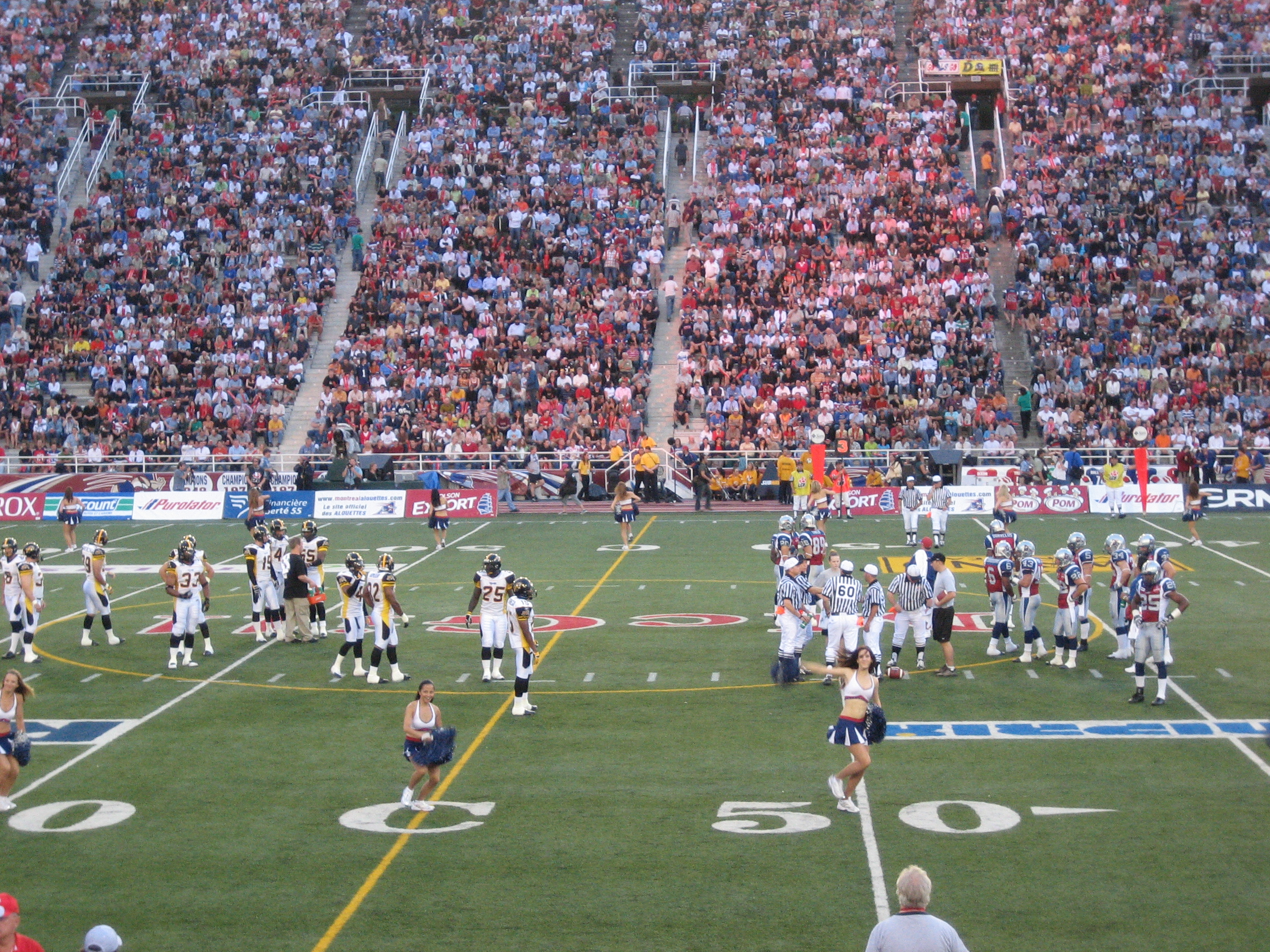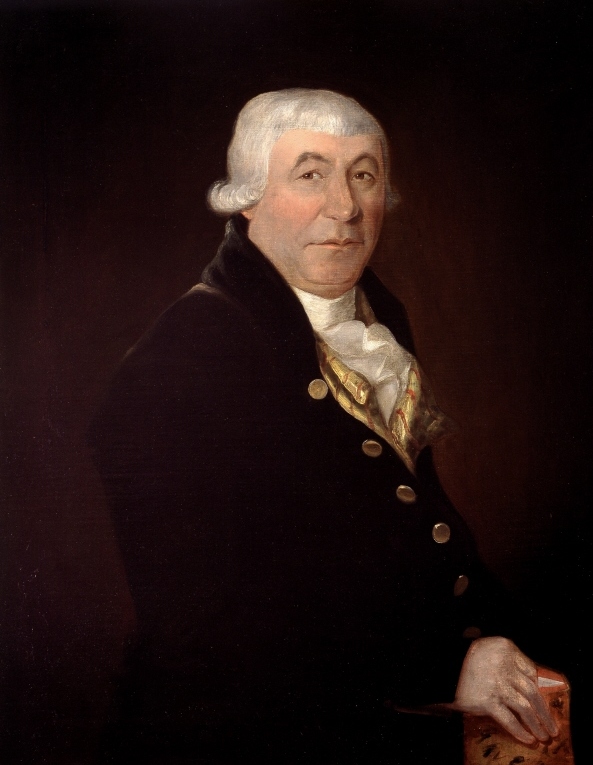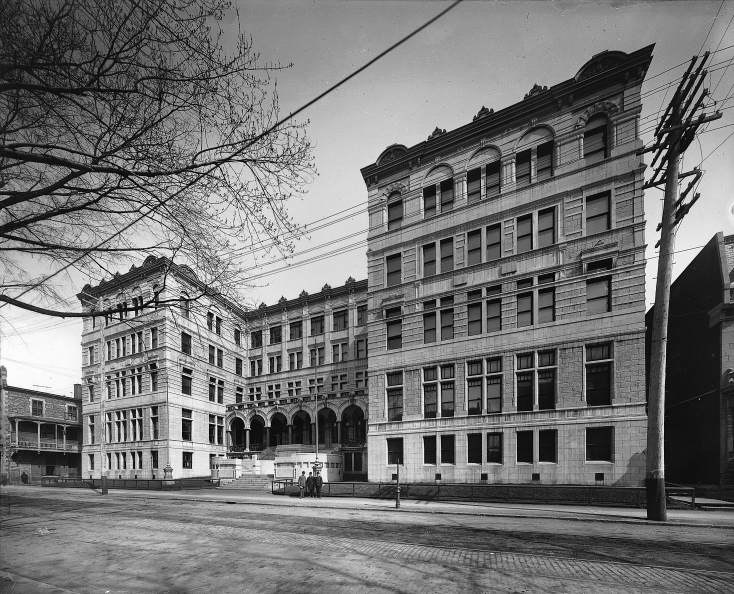|
Hochelaga, Land Of Souls
''Hochelaga, Land of Souls'' (french: Hochelaga, Terre des âmes) is a 2017 Canadian historical drama film directed and written by François Girard and starring Gilles Renaud, Samian and Tanaya Beatty. Dramatizing several centuries of Quebec history and the local history of Montreal in particular, the story depicts Quebec archaeology revealing the past of indigenous peoples, explorers and 1837 rebels. Girard had previously used an anthology approach in his films such as ''The Red Violin'', and was interested in another project that would depict Montreal. It was shot in Montreal, with performances in numerous languages. The film was screened in the Gala Presentations section at the 2017 Toronto International Film Festival. It won four Canadian Screen Awards, including Best Cinematography for Nicolas Bolduc, and was Canada's submission for the Academy Award for Best Foreign Language Film. Plot In the aftermath of a hard-fought battle between Indigenous warriors in 1267, wh ... [...More Info...] [...Related Items...] OR: [Wikipedia] [Google] [Baidu] |
François Girard
François Girard (born January 12, 1963) is a French Canadian director and screenwriter from Montreal. Born in Saint-Félicien, Quebec, Girard's career began on the Montreal art video circuit. In 1990, he produced his first feature film, ''Cargo''; he attained international recognition following his 1993 ''Thirty Two Short Films About Glenn Gould'', a series of vignettes about the life of piano prodigy Glenn Gould. In 1998, he wrote and directed ''The Red Violin'', which follows the ownership of a red violin over several centuries. ''The Red Violin'' won an Academy Award for Best Original Score, thirteen Genie Awards and nine Jutra Awards. He has also directed various works for the stage, including Stravinsky's ''Symphony of Psalms'', '' Oedipus Rex'' and '' Novencento'' at the Edinburgh International Festival; Kafka's ''The Trial'', adapted for the stage by Serge Lamothe at the National Arts Centre, Ottawa; the oratorio '' Lost Objects'' at the Brooklyn Academy of Music; ' ... [...More Info...] [...Related Items...] OR: [Wikipedia] [Google] [Baidu] |
Archaeology In Quebec
Archaeology or archeology is the scientific study of human activity through the recovery and analysis of material culture. The archaeological record consists of artifacts, architecture, biofacts or ecofacts, sites, and cultural landscapes. Archaeology can be considered both a social science and a branch of the humanities. It is usually considered an independent academic discipline, but may also be classified as part of anthropology (in North America – the four-field approach), history or geography. Archaeologists study human prehistory and history, from the development of the first stone tools at Lomekwi in East Africa 3.3 million years ago up until recent decades. Archaeology is distinct from palaeontology, which is the study of fossil remains. Archaeology is particularly important for learning about prehistoric societies, for which, by definition, there are no written records. Prehistory includes over 99% of the human past, from the Paleolithic until the advent of ... [...More Info...] [...Related Items...] OR: [Wikipedia] [Google] [Baidu] |
Indigenous Peoples In Quebec
Indigenous peoples in Quebec (french: Peuples autochtones du Québec) total 11 distinct ethnic groups. The 10 First Nations and the Inuit communities number 141,915 people and account for approximately 2 percent of the population of Quebec, Canada. First Nations Algonquian Abenaki The Abenaki comprise two First Nations communities named the Odanak First Nation (in Odanak, near Trois-Rivières) and the Wolinak First Nation (in Wôlinak, near Trois-Rivières). They number approximately 1,900 people. Anishinaabeg The Algonquin, who refer to themselves as ''Anishinaabeg'', comprise nine First Nations who live in communities located in the Outaouais and Abitibi-Témiscamingue regions of Quebec. These First Nations communities are: * Abitibiwinni First Nation in Pikogan *Algonquins of Barriere Lake in Lac-Rapide *Eagle Village First Nation - Kipawa in Kebaowek *Kitcisakik First Nation in Kitcisakik *Kitigan Zibi Anishinabeg First Nation in Kitigan Zibi *Long Point First N ... [...More Info...] [...Related Items...] OR: [Wikipedia] [Google] [Baidu] |
Jacques Cartier
Jacques Cartier ( , also , , ; br, Jakez Karter; 31 December 14911 September 1557) was a French-Breton maritime explorer for France. Jacques Cartier was the first European to describe and map the Gulf of Saint Lawrence and the shores of the Saint Lawrence River, which he named "The Country of Canadas" after the Iroquoian names for the two big settlements he saw at Stadacona (Quebec City) and at Hochelaga (Montreal Island).. Early life Jacques Cartier was born in 1491 in Saint-Malo, the port on the north-east coast of Brittany. Cartier, who was a respectable mariner, improved his social status in 1520 by marrying Mary Catherine des Granches, member of a leading aristocratic family. His good name in Saint-Malo is recognized by its frequent appearance in baptismal registers as godfather or witness. First voyage (1534) In 1534, two years after the Duchy of Brittany was formally united with France in the Edict of Union, Cartier was introduced to King Francis I by Jean Le V ... [...More Info...] [...Related Items...] OR: [Wikipedia] [Google] [Baidu] |
Hochelaga (village)
Hochelaga (pronunciation: ) was a St. Lawrence Iroquois 16th century fortified village on or near Mount Royal in present-day Montreal, Quebec, Canada. Jacques Cartier arrived by boat on October 2, 1535; he visited the village on the following day. He was greeted well by the Iroquois, and named the mountain he saw nearby ''Mount Royal''. Several names in and around Montreal and the Hochelaga Archipelago can be traced back to him. A stone marker commemorating the former village was placed in 1925 on land adjacent to McGill University. It is believed to be in the vicinity of the village visited by Cartier in 1535. The site of the marker is designated a National Historic Site of Canada. The name of the village survives in Hochelaga-Maisonneuve, the name of a neighbourhood of Montreal; a variant spelling survives in Montreal's contemporary Osheaga Festival. Etymology Most linguists accept the word ''Hochelaga'' as a French borrowing of an Iroquoian term either ''osekare'', meaning ... [...More Info...] [...Related Items...] OR: [Wikipedia] [Google] [Baidu] |
Percival Molson Memorial Stadium
Percival Molson Memorial Stadium (also known in French as ''Stade Percival-Molson''; commonly referred to as Molson Stadium in English or Stade Molson in French) is an outdoor football stadium in Downtown Montreal, on the slopes of Mount Royal, in the borough of Ville-Marie. Named in honour of Percival Molson, and owned by McGill University, it was the home of the Montreal Alouettes of the Canadian Football League from 1954 to 1967 and again since 1998. The stadium is also home to the McGill Redbirds and Martlets of the RSEQ, the Montreal Royal of the American Ultimate Disc League, the Selwyn House Gryphons high-school football team and the Canadian Corporate Soccer League, the largest amateur corporate league in Canada. History Constructed in 1914 on the slopes of Mount Royal, at the corner of University and Pine (avenue Des Pins), the stadium sat dormant through World War I with the cessation of football from 1914 to 1918. On July 5, 1917, Captain Percival Molson (1880 ... [...More Info...] [...Related Items...] OR: [Wikipedia] [Google] [Baidu] |
McGill University
McGill University (french: link=no, Université McGill) is an English-language public research university located in Montreal, Quebec, Canada. Founded in 1821 by royal charter granted by King George IV,Frost, Stanley Brice. ''McGill University, Vol. I. For the Advancement of Learning, 1801–1895.'' McGill-Queen's University Press, 1980. the university bears the name of James McGill, a Scottish merchant whose bequest in 1813 formed the university's precursor, University of McGill College (or simply, McGill College); the name was officially changed to McGill University in 1885. McGill's main campus is on the slope of Mount Royal in downtown Montreal in the borough of Ville-Marie, with a second campus situated in Sainte-Anne-de-Bellevue, west of the main campus on Montreal Island. The university is one of two members of the Association of American Universities located outside the United States, alongside the University of Toronto, and is the only Canadian member of the Glob ... [...More Info...] [...Related Items...] OR: [Wikipedia] [Google] [Baidu] |
Université De Montréal
The Université de Montréal (UdeM; ; translates to University of Montreal) is a French-language public research university in Montreal, Quebec, Canada. The university's main campus is located in the Côte-des-Neiges neighborhood of Côte-des-Neiges–Notre-Dame-de-Grâce on Mount Royal near the Outremont Summit (also called Mount Murray), in the borough of Outremont. The institution comprises thirteen faculties, more than sixty departments and two affiliated schools: the Polytechnique Montréal (School of Engineering; formerly the École polytechnique de Montréal) and HEC Montréal (School of Business). It offers more than 650 undergraduate programmes and graduate programmes, including 71 doctoral programmes. The university was founded as a satellite campus of the Université Laval in 1878. It became an independent institution after it was issued a papal charter in 1919 and a provincial charter in 1920. Université de Montréal moved from Montreal's Quartier Latin to its pr ... [...More Info...] [...Related Items...] OR: [Wikipedia] [Google] [Baidu] |
Mohawk People
The Mohawk people ( moh, Kanienʼkehá꞉ka) are the most easterly section of the Haudenosaunee, or Iroquois Confederacy. They are an Iroquoian-speaking Indigenous people of North America, with communities in southeastern Canada and northern New York State, primarily around Lake Ontario and the St. Lawrence River. As one of the five original members of the Iroquois League, the Kanienʼkehá꞉ka are known as the Keepers of the Eastern Door – the traditional guardians of the Iroquois Confederation against invasions from the east. Historically, the Kanienʼkehá꞉ka people were originally based in the valley of the Mohawk River in present-day upstate New York, west of the Hudson River. Their territory ranged north to the St. Lawrence River, southern Quebec and eastern Ontario; south to greater New Jersey and into Pennsylvania; eastward to the Green Mountains of Vermont; and westward to the border with the Iroquoian Oneida Nation's traditional homeland territory. Kanienʼkehá ... [...More Info...] [...Related Items...] OR: [Wikipedia] [Google] [Baidu] |
Academy Award For Best Foreign Language Film
The Academy Award for Best International Feature Film (known as Best Foreign Language Film prior to 2020) is one of the Academy Awards handed out annually by the U.S.-based Academy of Motion Picture Arts and Sciences (AMPAS). It is given to a feature-length motion picture produced outside the United States with a predominantly non-English dialogue track.80th Academy Awards – Special Rules for the Best Foreign Language Film Award . . Retrieved November 2, 2007. When the first Academy Awards ceremony was held on May 16, 1929, to honor fil ... [...More Info...] [...Related Items...] OR: [Wikipedia] [Google] [Baidu] |
Academy Of Canadian Cinema And Television Award For Best Achievement In Cinematography
The Academy of Canadian Cinema and Television presents an annual award for Best Achievement in Cinematography, to honour the best Canadian film cinematography. The award was first presented in 1963 as part of the Canadian Film Awards, with separate categories for colour and black-and-white cinematography; the separate categories were discontinued after 1969, with only a single category presented through the 1970s. After 1978, the award was presented as part of the new Genie Awards; since 2012, it has been presented as part of the Canadian Screen Awards. In early years, the award could be presented for either narrative feature or documentary films, although this was discontinued later on and only feature films were eligible. Beginning with the 3rd Canadian Screen Awards, a separate category was introduced for Best Cinematography in a Documentary. 1960s 1970s 1980s 1990s 2000s 2010s 2020s See also *Prix Iris for Best Cinematography References {{Canadian Screen Awar ... [...More Info...] [...Related Items...] OR: [Wikipedia] [Google] [Baidu] |
6th Canadian Screen Awards
The 6th annual Canadian Screen Awards were held on March 11, 2018, to honour achievements in Canadian film, television, and digital media production in 2017."Award Season Begins" ''Northern Stars'', December 13, 2017. Nominations were announced on January 16, 2018. and hosted the ceremony, which was held at the Sony Centre for the Performing Arts in Toronto. The awards in many of the t ... [...More Info...] [...Related Items...] OR: [Wikipedia] [Google] [Baidu] |

.jpg)





